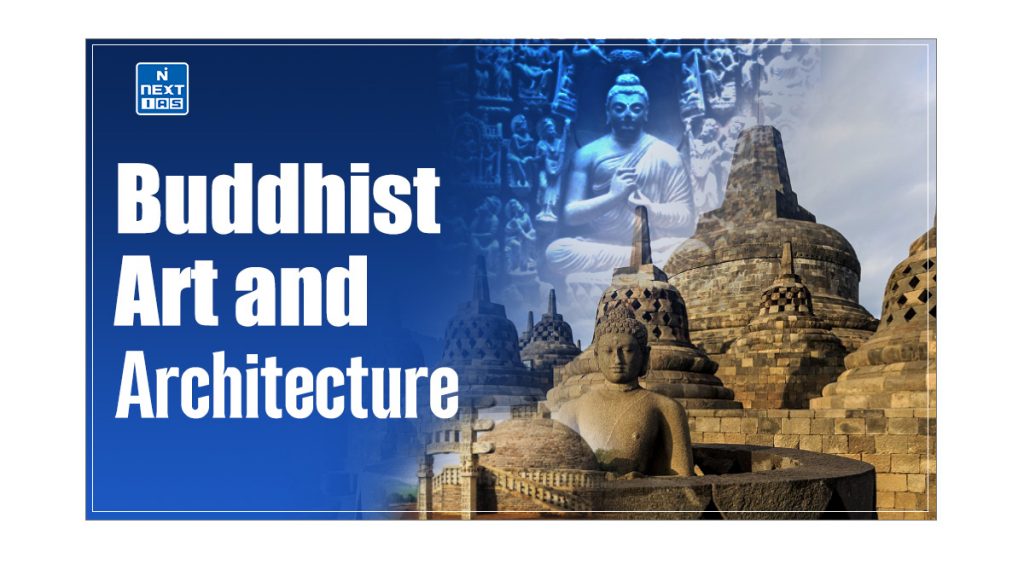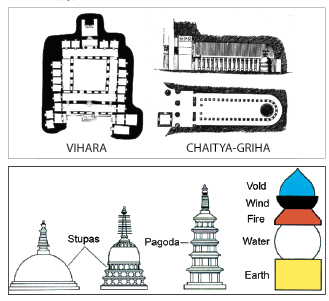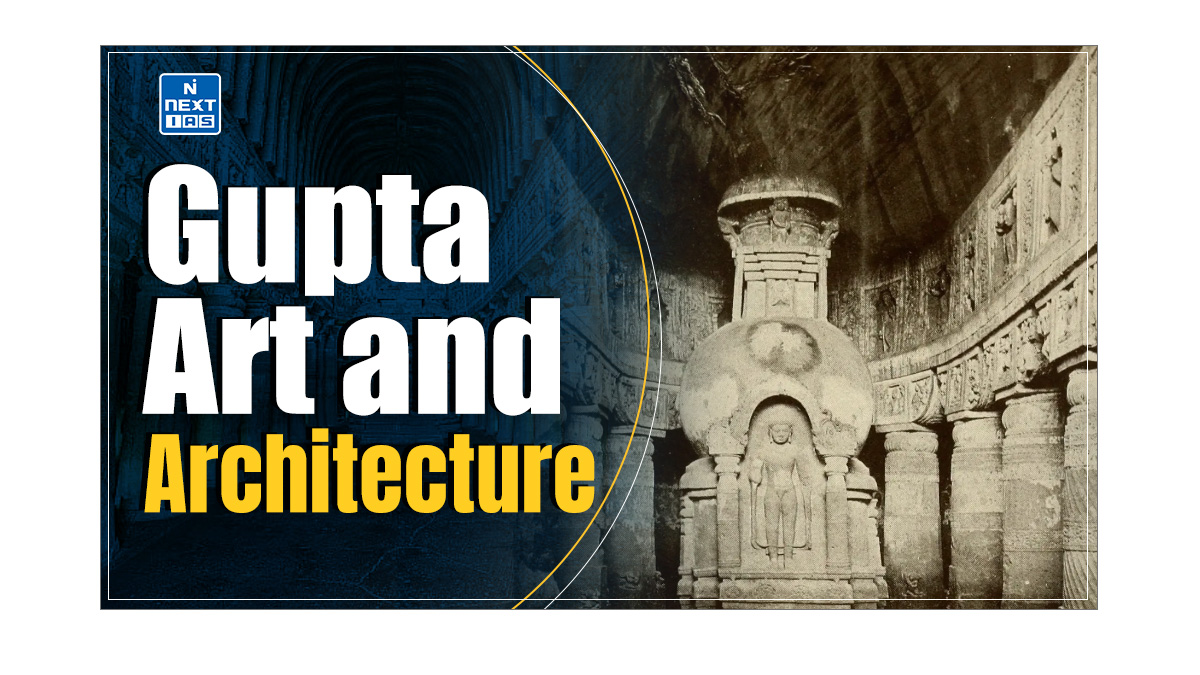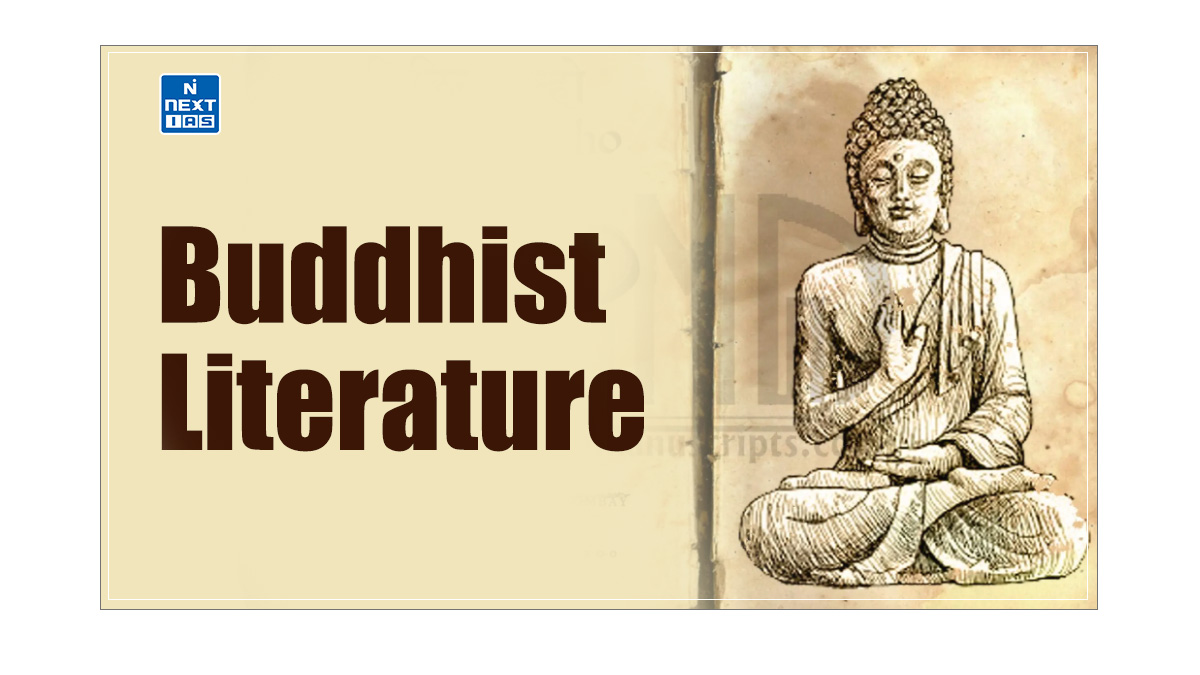
Buddhist art and architecture encompass the various artistic and structural forms created to represent and support Buddhist practices, including stupas, chaityas, and viharas. These forms are significant as they reflect the evolution of Buddhist teachings and cultural exchanges across Asia. This article aims to study in detail the origins, development, and impact of Buddhist art and architecture throughout history.
About Buddhism
- Buddhism, one of the world’s major religions, was founded in India in the 6th century BCE by Siddhartha Gautama, known as the Buddha.
- Rooted in the teachings of the Buddha, Buddhism centres on the path to enlightenment through understanding the Four Noble Truths and following the Eightfold Path, which guides ethical conduct, mental discipline, and wisdom.
- A fundamental tenet of Buddhism is the belief in the impermanence of all things and the cessation of suffering through the renunciation of desire and attachment.
- Buddhism’s focus on compassion, meditation, and the pursuit of wisdom has profoundly shaped Asia’s spiritual and cultural landscape.
- Its teachings inspire millions worldwide, offering a path to inner peace and liberation from the cycle of birth and rebirth.
Read our detailed article on Buddhism and Buddhist Literature.
Buddhist Art and Architecture
- Buddhist art and architecture represent an integral part of Buddhism’s cultural and religious heritage, reflecting its rich history and evolving practices.
- Buddhist art, which originated from the early aniconic phase to the development of elaborate stupas, chaityas, and viharas, visually embodies the core teachings and principles of Buddhism.
- This art form not only serves as a medium for religious expression but also plays a crucial role in disseminating and preserving Buddhist philosophy.
Origins of Buddhist Art and Architecture
- Buddhist art and architecture originated in India around the 3rd century BCE, evolving from aniconic representations to symbolic and, later, anthropomorphic depictions.
- Initially, Buddhist art avoided direct representations of the Buddha, focusing instead on symbols such as the lotus, stupa, and Dharma wheel to signify his presence and teachings.
- This aniconic phase is exemplified by the early stupas and rock-cut caves, which served as important sites for meditation and rituals.
- With the spread of Buddhism, particularly under the patronage of Emperor Ashoka, art began to include more direct representations of the Buddha and significant events from his life.
- The architectural focus shifted to the construction of stupas, chaityas (prayer halls), and viharas (monastic quarters), each in the religious and communal life of Buddhist monks and lay followers.
- This formative period laid the groundwork for the rich and diverse tradition of Buddhist art that continued to develop across Asia.
Early Buddhist Art
- Buddhist Art refers to the diverse range of artistic expressions associated with Buddhism, encompassing sculptures, paintings, architecture, and decorative arts that depict the life, teachings, and symbols of the Buddha.
- Early Buddhist Art primarily employed symbolic representations rather than physical images of the Buddha, reflecting a period of aniconism.
- Prominent symbols included the Dharma Wheel, Bodhi Tree, and Lotus Flower, each embodying key aspects of Buddhist teachings and practices, which have been discussed in detail in the following section.
Aniconic Phase
- In the initial phase of Buddhist art, the Buddha was represented indirectly through symbols rather than images.
- During this period, known as the aniconic phase, he avoided depicting the Buddha’s physical form, focusing instead on symbols that conveyed his teachings and presence.
- This approach aligned with the early Buddhist emphasis on avoiding idol worship.
Major Symbols
- During this period, various symbols represented the Buddha and his teachings. Some key symbols included:
- The Dharma Wheel (Dharmachakra) represents the Buddha’s teachings and the cycle of birth and rebirth;
- The Bodhi Tree signifies the place of the Buddha’s enlightenment;
- The Lotus Flower symbolises purity and the potential for spiritual awakening.
- These symbols were integral to Buddhist art and were focal points for meditation and worship.
Gandhara School
- Gandhara Art, influenced by Greco-Roman styles, is known for its realistic representation and detailed sculptural forms.
- Notable examples include Buddha statues, intricate reliefs, and stupas, which showcase a blend of Hellenistic and Buddhist artistic traditions.
Mathura School
- Mathura Art is characterised by its indigenous Indian styles and emphasis on divine imagery, reflecting traditional Indian aesthetic values.
- Buddha images, sculptures, and distinctive stupa designs are prominent examples, highlighting the region’s rich contribution to early Buddhist art.
Buddhist Architecture in India
- Buddhist architecture in India encompasses the structures built for the practice and veneration of Buddhism.
- Buddhist architecture in India includes stupas, chaityas, viharas, and monastic complexes, which serve as centres for worship, meditation, and communal living and reflect Buddhism’s spiritual and cultural values.
- Buddhist architecture in India is designed to embody the principles of Buddhist teachings and support the monastic lifestyle.
Stupas
- The Stupa is a significant architectural form in Buddhist art, designed to house relics of the Buddha or revered monks.
- Traditionally, it is a dome-shaped structure with a central chamber that contains the relics, often surrounded by a circular path for circumambulation.
- The stupa’s design symbolises the Buddha’s enlightenment and the cosmos, with its mound representing the cosmic axis and the circular path symbolising the cycle of life and rebirth.
Chaityas
- A Chaitya is a distinctive Buddhist prayer hall or shrine characterised by its barrel-vaulted roof and a stupa at one end.
- The interior of a chaitya often features an apsidal shape, creating a space conducive to meditation and worship.
- The design emphasises a harmonious space for communal worship and reflection, with the stupa as the focal point of devotion.
Viharas
- The Vihara is an early form of a Buddhist monastery that typically includes an open courtyard surrounded by individual cells or rooms for monks.
- These structures were initially designed to provide shelter during the rainy season, facilitating the monastic practice of retreat and study.
- The layout of viharas reflects the communal and contemplative nature of early Buddhist monastic life, emphasising simplicity and functionality.
Monastic Complexes
- Monastic complexes are expansive religious centres that include chaityas, viharas, and other facilities for the monastic community.
- These complexes, such as those found at Nalanda and Takshashila, are significant in Buddhist monastic life as they provide space for meditation, teaching, and communal living.
- The layout of these complexes, integrating educational, residential, and worship spaces, highlights the organised structure of Buddhist monastic institutions and their role in disseminating Buddhist teachings.
Examples of Indian Buddhist Architecture
- The stupas of Sanchi and Amravati, the chaityas of Ajanta and Ellora, and the viharas of Nalanda represent some of the finest examples of Indian Buddhist architecture.
- These sites showcase advanced architectural and artistic techniques and reflect Buddhism’s spiritual and cultural significance in ancient India.
- Each site offers unique insights into the evolution and integration of Buddhist architectural forms into the broader landscape of Indian art and culture.

Influence of Buddhist Art and Architecture
- Spread to Other Regions: Buddhist art and architecture significantly influenced the art and architectural traditions of Central Asia, Southeast Asia, and East Asia.
- In Central Asia, Buddhist motifs were integrated into the art of the Silk Road, while in Southeast Asia, the construction of stupas and intricate carvings in countries like Thailand and Myanmar were inspired by earlier Indian styles.
- East Asian regions, including China and Japan, adopted and adapted Buddhist art forms, such as the construction of cave temples and the portrayal of Buddhist deities, reflecting the deep cultural exchange facilitated by Buddhism.
- Legacy: Buddhist art’s legacy is evident in its continued influence on contemporary Buddhist art, where modern artists reinterpret traditional themes and iconography.
- This enduring influence extends beyond the Buddhist world, impacting global art movements by introducing Buddhist symbolism and aesthetic elements into diverse artistic expressions.
- Buddhist art’s adaptability and universal appeal have ensured its relevance in historical and modern contexts.
| Buddhist Universities | Rulers Associated |
| Nalanda (Bihar) | Kumargupta I (Gupta Ruler) |
| Odantpuri (Bihar) | Gopala (Pala Ruler) |
| Vikramashila (Bihar) | Dharmapala (Pala Ruler) |
| Somapuri (Bengal) | Dharmapala (Pala Ruler) |
| Jagadal (Bengal) | Ramapala (Pala Ruler) |
| Vallabhi (Gujarat) | Bhattarka (Maitrak Ruler) |
Conclusion
In conclusion, Buddhist art and architecture offer profound insights into Buddhism’s spiritual and cultural dimensions. These artistic and architectural forms have been crucial in disseminating Buddhist teachings, from the early aniconic symbols to the grandeur of stupas and monastic complexes. The influence of Buddhist art extends beyond India, impacting artistic traditions across Asia and continuing to inspire contemporary art and global cultural movements. This enduring legacy underscores Buddhist art’s significance in understanding Buddhism’s historical and spiritual journey.
Frequently Asked Questions (FAQs)
What is Buddhist art and architecture?
Buddhist art and architecture refers to the visual and structural expressions that developed around the teachings of Buddhism, including sculptures, paintings, stupas, and monasteries.
What are the key features of Buddhist art?
Buddhist art features symbolic representations of the Buddha, such as mudras and the lotus, and depictions of Bodhisattvas.
What are the art forms of Buddhism?
Buddhism’s main art forms include stupas (monumental structures housing relics), cave temples (like Ajanta and Ellora), sculptures of Buddha and Bodhisattvas, and paintings depicting Buddhist narratives.






